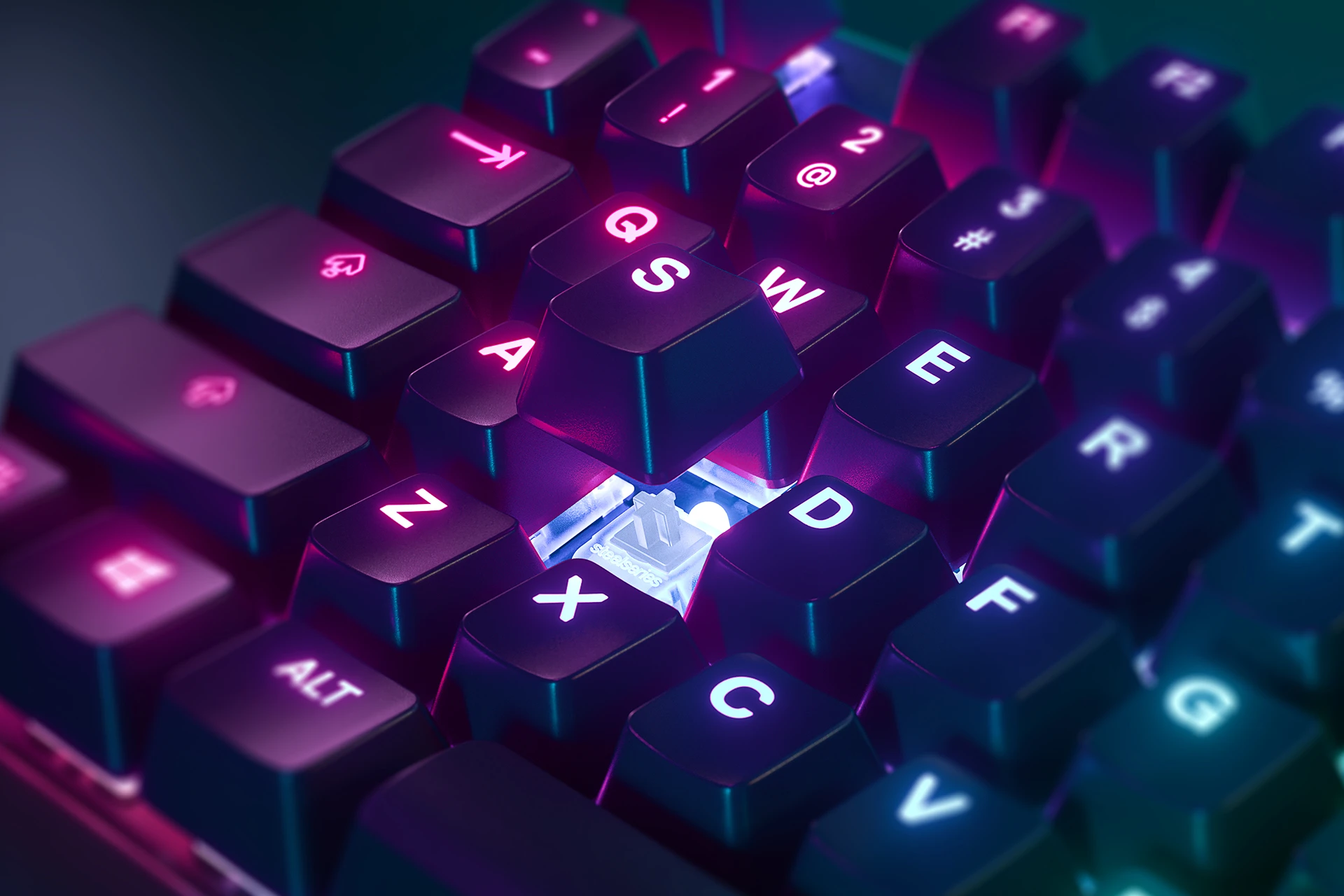
Find Your Perfect Keyboard Actuation
Say 'Bye, Felicia' to slow reaction times and fat finger typing.

Have you ever lost a game by just a split second? Or made an embarrassing typo, only to delete it and make the same typo again? The problem may not always be you, but the sensitivity of your keyboard. Here's how to find out if your actuation distance is to blame, and how to fix it.
When I work, my fingers tend to type faster than my brain, which has fostered a close personal relationship with the backspace key. When I play games, however, those same lightning-fast fingers always seem to be a millisecond too slow. Add in two cats that are oh so helpful and you get even more backspacing and colorful language.

If you can identify, we have good news - adjusting the keyboard actuation can help! In fact, the new Apex Pro keyboard allows you to create multiple profiles and adjust each individual key from a featherlight 0.4mm sensitivity all the way down to a deep 3.6mm.
Here's how to find the perfect settings for you:
Identifying Problem Areas
Adjust your keyboard to match your typing style, not the other way around. Source: Tenor
The first thing you'll need to do is figure out which keys aren't cooperating when you need them to. Some answers will be obvious because they happen a lot. For example, if you activate your ultimate in a MOBA too soon, or rest your thumb on the spacebar too hard, these are problems that can be fixed using adjustable switches.
Maybe your index finger doesn't mess around but your pinky has a hard time catching up. Perhaps you sit poised to strike when playing a game but your fingers get a mind of their own when you're in chat.
Try taking an online typing test or play TypeRacer to gauge your accuracy and speed. Keep a list of keys or problems that arise frequently, then divide the keys into three categories:
Category 1: Too Sensitive
High sensitivity is great for relationships and lighting-fast gaming reflexes, but not so much for typing, especially if you're going for speed. My cat loves to press the F1 button for some reason. (Is she saying I need help??) Identify the keys that are activating too quickly or too often for your liking, then deepen the actuation.
Hint: the higher the actuation mm, the less sensitive the key will become. The Apex goes all the way up to 3.6mm, which is almost twice as deep as a standard mechanical switch.)
Category 2: Too Deep
Now that we've identified which keys need to calm the heck down, it's time to address the other side of the spectrum. Sometimes you just want to think about a key and have it press before your opponent does. In that case, you can increase the sensitivity up to an insane 0.4mm. Barely making contact is all you need to take the shot.
WARNING: Playing on this setting may cause you to believe you have telekenesis. Heck, maybe you do, we don't know. Maybe just go with it.
Category 3: Just Right
You may find that some of the keys are right where they need to be! Adjust the keys you need to and feel free to leave the others alone. Want to type a minimum of 20 "O"s whenever you write LOL? There's an actuation for that. The very best actuation setting is the one you design, so have fun with it!
Everyone has many different styles and use cases for a keyboard. The Apex Pro's OmniPoint switches allow you to adjust each key's sensitivity to meet your own needs, and switch between sensitivity profiles based on what you're doing: typing, gaming, raging, working, socializing...and everything in between. <a href=https://steelseries.com/gaming-keyboards>Check out our selection of gaming keyboards.

Lifelong gamer, long-time game journo, and occasional game dev, HB Duran can usually be found writing about video games, playing them, or both, which is not easy to do at the same time. If you ask her what her favorite platform is, she will probably just say "yes."